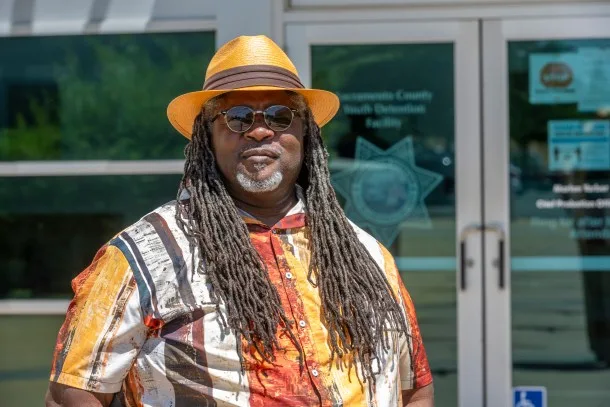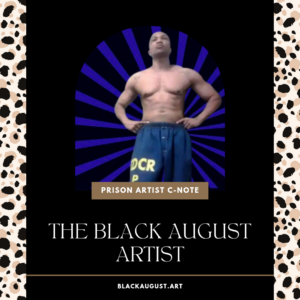By Genoa Barrow | OBSERVER Senior Staff Writer
Preachers have other pastors they go to for spiritual guidance and professional athletes have personal trainers who help them stay in tip-top condition. Local educator Dwight Harvey employs the same concept and as a lifelong learner, continues to sharpen his skills to be of best service to the community.
Harvey recently participated in a transformative restorative justice training program, facilitated by Dr. Ernest Uwazie, who chairs Sacramento State’s division of criminal justice and serves as director of its Center for African Peace and Conflict Resolution. The program trains people to facilitate face-to-face meetings between victims and their offenders, and prepares both parties for interaction. What Harvey learned helps inform his work in youth corrections, particularly the opportunity to role play and take on scenarios from each side.

Harvey is the vice principal at El Centro Junior-Senior High School, the on-campus school of the Sacramento County Youth Detention Facility at the B.T. Collins Juvenile Justice Center. Harvey also has his own business, Resolute Solutions LLC, that does restorative practice training and leadership coaching.
“When I go into different districts, one of the things that I try to do is, if they don’t have a program, I try to bring that program to the school,” Harvey says.
Part of the work is first getting people to understand restorative practice, which is an approach to conflict that leans toward empowerment and repair rather than punishment exclusively.
“I’ve been doing countywide trainings on restorative practice and how people can implement that in their classrooms, how administrators can implement that throughout their schools as they’re dealing with our youth,” Harvey says.
“It starts off with adults having a restorative mindset and understanding what being restorative looks like. For me, that looks like finding ways to work with people, as opposed to doing things to you or for you, but trying to find a way to be collaborative in our approach to discipline.
“In schools, the way discipline has happened in the past – probably since school was even thought up is – discipline has been extremely punitive,” Harvey continues. “We try to make people do what we want them to do as opposed to talking more about it. It’s much more focused on discipline and what the offender has done and punishing them as opposed to talking through what these issues are.”
He understands why that is on some level, but says that way of thinking looks more like the model used inside jails and prisons rather than something that’s effective for children.
“It’s more like a penal system than an approach to just being collaborative and talking and dealing with possibly the mental health issues that we have that are much more prevalent now than they have ever been in in society and dealing with the disparities and how our students, especially students of color, have been on the negative side of this discipline that’s been happening,” Harvey says.
Restorative justice, he says, is about communication, building relationships and changing mindsets in how discipline is viewed.
“It’s how we build relationships in our classrooms, in our office spaces and with our community. With our parents, with our families, all of that, and really giving people a voice into this, as opposed to telling you what’s going to happen.”
Some argue that “too much talking” is how things got out of control in the first place, pointing to the age-old “spare the rod, spoil the child” adage. Harvey also agrees with that on some level.
“I’ll be honest, I’m not always restorative. I don’t always want to be restored. As a human, I’m going to get mad, I’m going to get angry, I’m going to want justice for what I feel has happened to me. But, the more that I’ve done this, it really boils down to, ‘I really want to be heard, I really want you to hear me, and as the victim of something, I want you, as the offender, to truly know how what you did affected me.’ I get just as angry as you get. I might want to fight and do whatever, like you do, but talking this through helps me to make a different decision.”
That wait time is golden, he says.
“To be given that space to take in what’s happened, to understand it within myself, then I’m more able to talk about it in a different manner. And when I can decide when I’m ready to talk, that’s huge. I think one of the mistakes that we make in dealing with restorative practices in schools, or even in institutions of incarceration, is we try to force it. I try to tell you when you’re ready to talk as opposed to letting you tell me when you’re ready to talk, or when you’re ready to be a part of this. And that could be a day from now. It could be a week from now. It could be a year from now.”
In both school and incarceration settings, how things are done are matters of control and power.
“Part of the fear is losing that control,” Harvey says. “As a person of authority, I want to remain in control. As a person of power, I want to hold on to that. The fear of losing that has put us into the situation that we’re in, in the classroom. I’m not saying that’s every teacher, but I think it becomes a power struggle – ‘I’m the teacher. You do what I say.’”
Thanks to cell phones, social media and viral videos, the public has seen plenty of examples where that goes left. Racism, overcrowded classrooms, educators who are unequipped to deal with issues their students are facing – and students who have no respect for teachers – don’t help matters.
“I think that all revolves around lack of trust and lack of having built relationships and lack of truly collaborating with people and hearing people,” Harvey says. “I don’t think this work is easy. It’s very difficult work and it takes a lot of patience. With a system that has been built to, unfortunately, not work for certain people, it takes a lot of that patience and that willingness to want to do this.”

It took Harvey years to learn to be patient and understand that the work “isn’t for everybody.”
“I’ve had to learn to be nonjudgmental and learn that this is a process. The best piece of advice that I’ve ever gotten, and I got this from my wife, was, ‘It’s over when it’s over. It takes as long as it takes.’”
Harvey says he’s seeing positive feedback on campus.
“When people see me, they’re willing to talk, they want to express themselves, they’re willing to be vulnerable. I’ve seen the atmosphere around our teachers improve drastically because I believe they see the support that they’re receiving, they see that this isn’t just a fly-by-night, ‘we’re going to be doing something different next year’ thing. They see that this is a focus and that, I believe, it’s something that they’re wanting.”
Harvey frequently receives calls from school administrators asking him to bring his training sessions to their campuses – for staff and families.
“I’m really placing myself in a position to become a leadership coach for educators, as well as just becoming a coach of restorative practices and what that looks like and social emotional learning and how we can use that in schools.”
Change hasn’t happened overnight, but Harvey is glad it’s happening.
“Whether it’s been in a youth detention facility, in a classroom or even just in a community, where I’ve seen it make a dent is when you find people that are willing to start this process of listening when they’re given the space to kind of understand their feelings and to think about what has happened and to hear others out through the process, or when they’re given the opportunity to be heard, I think that’s where the differences are beginning to be made.”
Prior to El Centro, Harvey also served as a vice principal in the Twin Rivers and San Juan Unified school districts.
“They kind of set the tone and the climate and the atmosphere of the school,” he says of vice principals.
“So if we can start to use those practices in our approach to discipline and our approach to mental health and just how we work with students, I think that’s when we change what it looks like when a student comes into my office for discipline. We change the way relationships are being built on campus; we change people’s mindsets about how we handle discipline on campus.”
Harvey is encouraged to see more administrators buying into the restorative practice approach.
“Lately, it hasn’t been as hard of a sale,” he says. “I think the younger generation, because of how things are more predominant in society, we talk a lot more about certain things. For me, it’s been easier to work with this younger generation to start these kinds of movements.”
Diversity also matters.
“As we get more people of color that are involved in education, I’ve seen that also where we’re more willing to have these conversations. Where I’ve seen the big struggle, unfortunately, is with this old mindset, kind of like a good-old-boys club of ‘This is the way we’ve always done things.’”
Some have adopted “if it ain’t broke, don’t fix it” thinking and wonder why the process is being changed.
“I think there’s some strides being made. Even here where I work, the young lady who is the principal, she has a very open mind about restorative practices, and just in truly working with individuals and being empathetic, and bringing socio-emotional learning into the school environment and dealing with mental health,” Harvey says.
“I think we get these small pockets where we get people who are open to these processes. I’ve had principals that I’ve worked with, where they’re like, ‘Dwight, go do your thing’ and have been very open in allowing me to go get training and bring that back to staff and starting those conversations and being willing to have professional development with staff around these topics, around school culture and how we deal with discipline, around classroom management and teaching strategies.”
Prior to working with youth in a correctional setting, Harvey worked in a local school district’s equity department for nearly two years.
“I left there because I didn’t feel that they were doing what they said they were going to do. I left there because the work in equity and diversity, that DEI work, I think is very important,” he says. “It takes making people feel uncomfortable to make those kinds of changes. Those are hard conversations. In many school districts, the DEI work that’s being done is so surface level. It’s not truly touching the heart of the matter. I think that happens a lot with schools dealing with discipline. ‘Yes, I want to talk about lowering the suspension rate, but do I really want to do the work that it takes to lower the suspension rate?’”
There are questions that need to be asked, Harvey says, even if it puts the person asking at risk.
“Why are we not doing this work? Why aren’t we truly addressing why our suspension rates for African Americans and people of color are so high? Why aren’t we addressing the fact that two teachers are responsible for 95% of these suspensions? Why aren’t we still having those hard conversations?”

Over the coming weeks, “Inside Out” will highlight the experiences of formerly incarcerated individuals and their families, look at efforts to improve local jail and prison facilities, and share the perspectives of Black correctional staffers and attorneys who work on change from within and activists who have dedicated their lives to shining a light on the inequities of the criminal justice system.





